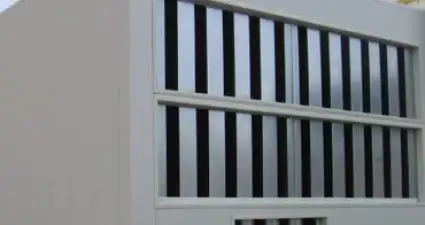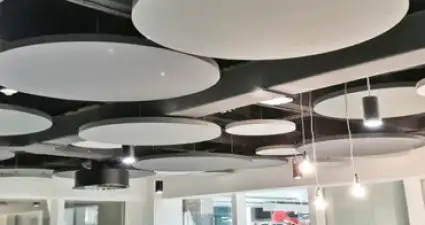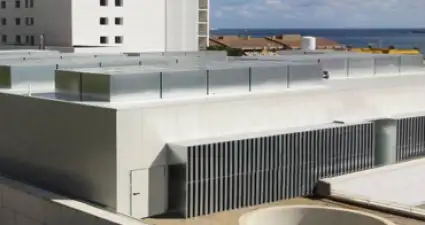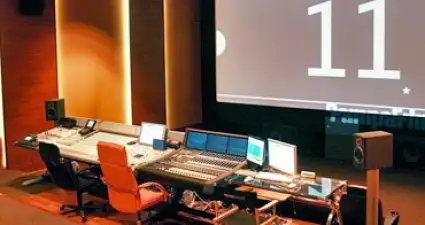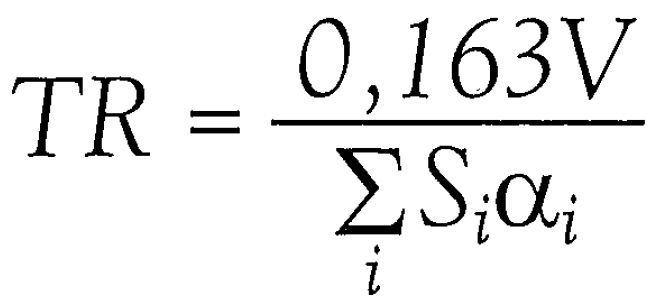Acoustic Islands

The new architecture is allowing the introduction of acoustic materials that before were very limited due to their aesthetic characteristics. It was difficult to blend in absorbent acoustic products in environments with high decorative standards. All of this has been solved thanks to the new range of acoustic products, which companies such as Acústica Integral have introduced into the market: ACOUSTIC ISLANDS.
We must take into consideration that thanks to the regulatory changes (CTE, DB-HR, new ordinances, noise Law, etc), the control criteria of the acoustic characteristics have changed radically, and have gone on to form part of the parameters that must be controlled, so that the functionality of the different premises are adapted to the different uses of the premises.
A premises indented for rest area is not the same as a premise intended for offices, or a premise intended to be a conference room, or the particular application for which it is going to be developed. The control of the acoustic parameters such as: the reverberation time, word intelligibility, degree of background noise, etc. have now become common terms within the architecture field, and in the same way that areas are developed to be functional, they are also considered from the acoustic point of view.
If we analyse the factors that have an influence on the reverberation time of the premises from the basic formula of Sabine, we can draw very interesting conclusions:
- V = Volume of the premise in m³.
- S = Surface area of the material in m².
- α = Sound absorption coefficient of the material.
We can see that the reverberation time is directly proportional to the volume of the premise. This entails that larger rooms will have large reverberation times; and small rooms, the opposite. If we think of a cathedral, when we speak, we see that the sound is amplified by the enclosure, and the time that the sound that we emit takes to disappear is very long. This implies, for example, that when someone talks in a cathedral and wants to be understood, he/she must speak slowly, to prevent for the words to mix with the following words and for the message to be distorted.
We can also conclude that the formula that both the surface of the materials that form part of the room and their absorbent capacity, make for the reverberation time to be smaller, the higher these factors are. If for example, we have an empty house, the sound we have is very reverberant as it doesn't have furniture, yet if we furnish it and add curtains, sofas, carpets, etc; the reverberation time reduced, due to the volume we take off and to the absorption of the materials we place in the house.
This implies that it will be very positive to introduce absorbent acoustic materials to control the reverberation time of enclosures, improve word intelligibility and reduce the background noise level that is produced due to the effect of the reflections on walls, floor and ceiling.
Another very important parameter that we have to control in premises is word intelligibility, music intelligibility, that is, the conservation of the message we want to transmit to a recipient.
This parameter is affected by multiple causes. The greater the reverberation time, the lower the word intelligibility will be, we understand worse. The background noise also has a negative impact. The greater the background noise, for whatever reasons (many people sharing an area, highly reverberant room, noise from the air-conditioning units, poor acoustic insulations, etc.), the worse will be the intelligibility of words, music, etc.
It is essential to take consider that when a building project is developed, we must study the acoustic parameters.
If the acoustic criteria are not taken into consideration in the design phase of a building, these will turn into endemic problems that could subsequently be very difficult to solve...

Acústica Integral has been developing absorbent acoustic products for many years, and its efforts are focused on being able to offer the market products that are easy to apply (without expensive refurbishing works) and that can be integrated into any decoration environment. It has therefore developed the range of ACOUSTIC ISLANDS to be applied in high standard decoration architectural environments. The variety of products, shapes, sizes and colours, enable the architecture firms to provide products of a high technical and decoration level, that they can fit into any type of project.
the range of products is very extensive and enables developing standard or customised designs: Acustiart , Acustiart-C , Acustiart-S , Acustiart-DUO , Acustiart-L , Acustiart Digital .
The aesthetic possibilities of these products make them ideal to be applied in any situation where it is necessary to control the reverberation and guarantee appropriate intelligibility values, achieving low background noise levels generated by reflection effects.
Their applications in multi-purpose rooms, offices, restaurants, bars, coffee shops, radio stations, studios, home cinema, TV sets, cinemas, theatres, rehearsal rooms, shops, museums, exhibition rooms, department stores, hotels, hospitals, outpatient clinics, gyms, etc.
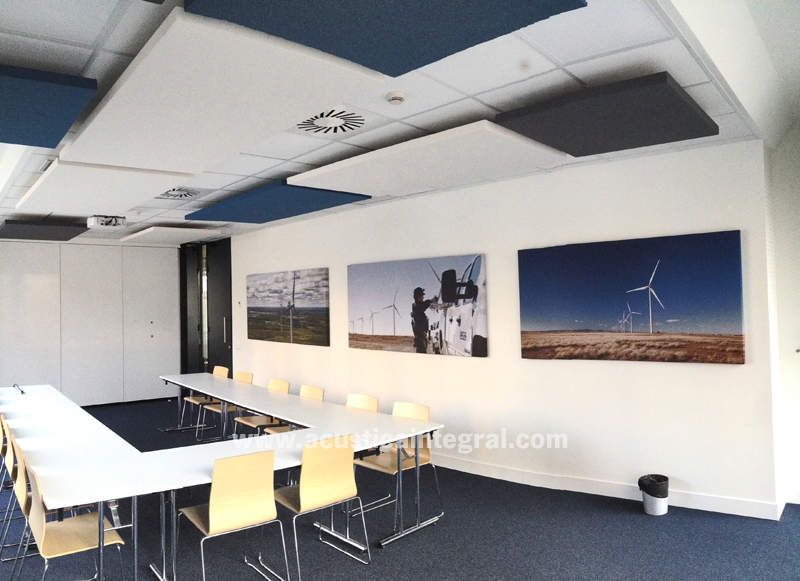
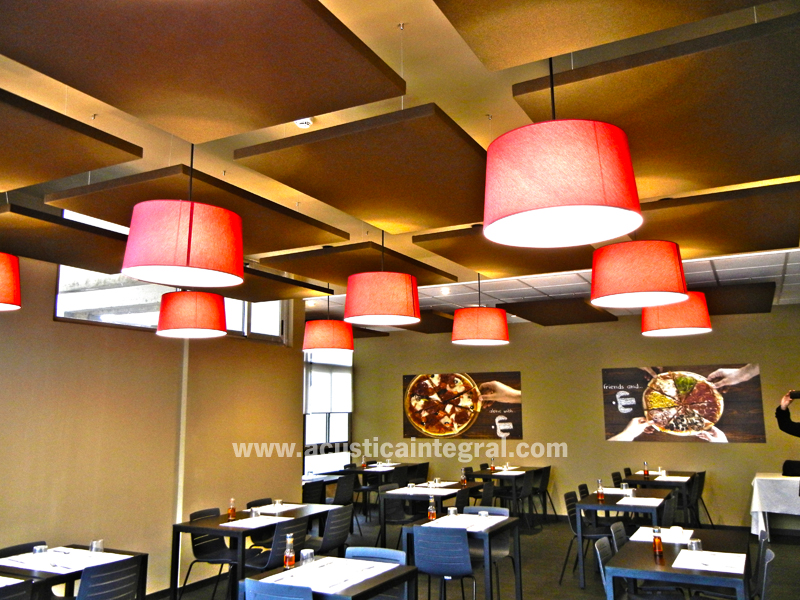
The new construction trends make the use of acoustic islands more suitable as part of a building's technical solutions, and are especially important where the acoustic control is a basic requirement to develop an activity.
To see more projects... ACOUSTIC ISLANDS by ACUSTICA INTEGRAL


